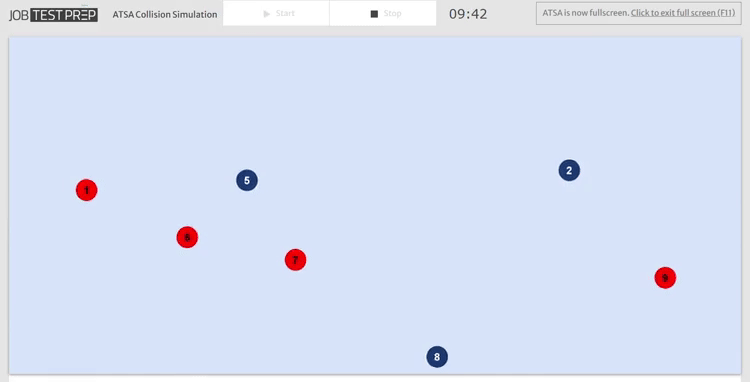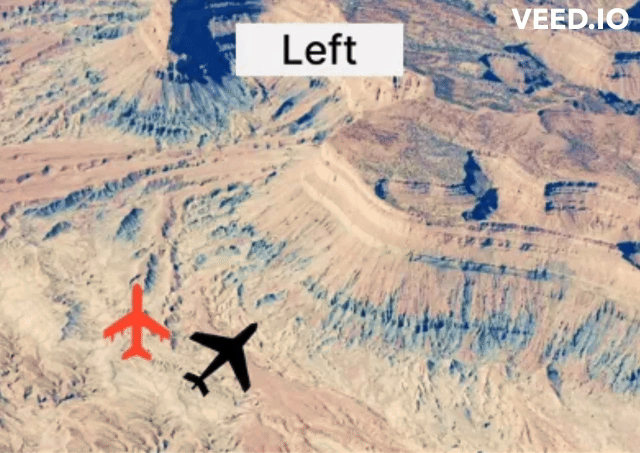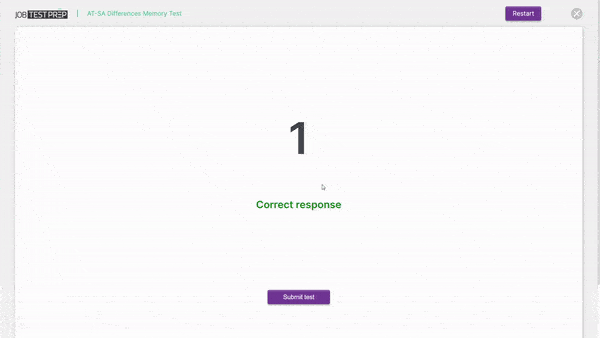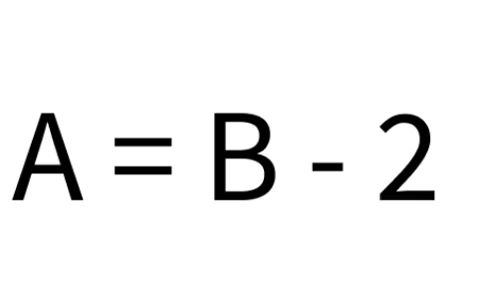Last updated: Nov 10th, 2025
The Air Traffic Skills Assessment (ATSA) is the gateway to becoming an Air Traffic Controller for the Federal Aviation Administration (FAA)—a highly competitive and demanding process that requires precision, focus, and strong cognitive skills.
With thousands of applicants each year, achieving a top score on the ATSA is crucial to securing a Tentative Offer Letter (TOL) and moving ahead in the FAA hiring process.
To help you stand out, JobTestPrep has developed a comprehensive, fully updated ATSA PrepPack™, designed to mirror the actual FAA exam and strengthen each of the skills assessed on test day.
Updated 2025 ATSA Test Practice | Trusted by over 11,400 ATSA Candidates
What Is the ATSA Test?
The Air Traffic Skills Assessment (ATSA) is a 3.5-hour exam created by a company called Pearson, and taken at Pearson Professional Centers (PPCs) across the U.S. It is usually scheduled 2–3 months after applying to the FAA. It measures key cognitive abilities like memory, spatial awareness, logic, and multitasking—skills every successful Air Traffic Controller needs.
In the US, the ATSA is a key stage in the process of becoming an Air Traffic Controller.
ATSA Scoring
The FAA selects candidates with the highest ATSA scores → so simply passing isn’t enough.
Results are divided into four score groups:

Only those in the top tier typically receive a Tentative Offer Letter (TOL), with slight preference given to Pool 1 applicants (military veterans and CTI graduates).
The best way to ensure that you pass the ATSA exam, receive a TOL and advance to the next stage in the ATC hiring process, is to receive a Best Qualified Score.
Only an estimated 2.5-6% of the candidates pass the ATC test and receive a TOL. Based on a survey conducted among 135 ATSA test takers, practicing with our ATSA Test Prep improved candidates' chances to pass the ATSA exam and receive a TOL by approximately 45%.

ATSA Categories - Explanation and Examples
The ATSA contains seven test categories, all of which are covered extensively on our ATSA Prep Course, the most accurate on the market.
Let's explore the ATSA test categories. Click a category to jump to the corresponding section.
ATC Simulation and Visual-Spatial Relationship
The first two question categories are similar in that they don't require knowledge but rather soft skills, which are crucial for passing your ATC training.
These include:
- Set-shifting and multitasking
- Spatial orientation
- Performance under pressure
Let's go over these test categories one by one:
Memory Games
Memory is considered particularly important for the job of Air Traffic Controller, and as such represents a soft skill that deserves two distinct categories: Numbers & Differences, and Variables.
Together, these games evaluate your:
- Working memory
- Short-term memory
- Response time
Let's review the ATSA memory sections:
Logical Reasoning, Personality, and Reading Comprehension
The remaining three ATSA Test categories are closer to what you might expect from typical pre-employment aptitude exams.
They aim to ascertain candidates' abilities in:
- Deductive Reasoning
- Understanding, drawing conclusions, and implementing written information
- Character and personality traits
Let's take a look at these test sections:
JobTestPrep's ATSA Prep Course
Accurate and Comprehensive Preparation
Our course is designed to maximize advancement in the abilities measured by the exam in the shortest time possible.
We constantly update our course content and platform based on fresh customer feedback.
Here is some of what our learners have said:
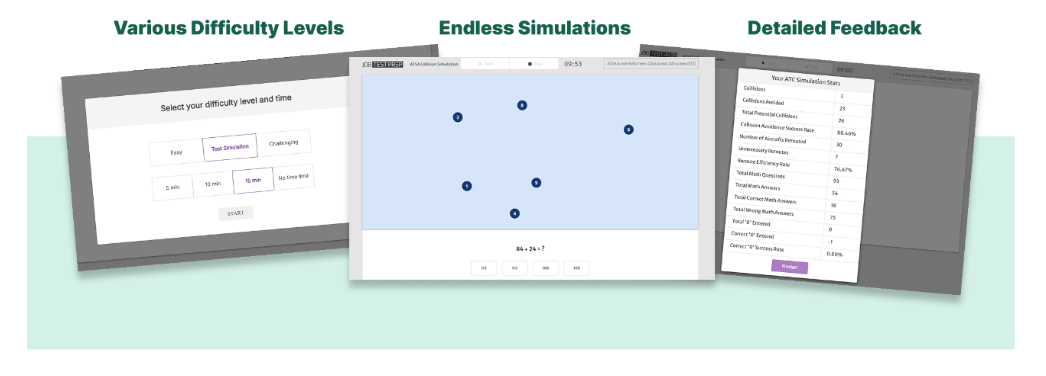
How to Study for the ATC Test? 5 Tips
- Start preparing a long enough time before the ATSA test date. Most ATC candidates who practice with our preparation take at least a month to prepare, and most wish they had more time.
- Many questions on the ATSA test are unique and will not be found in any other test. To best prepare for it, it is highly recommended to practice full-length ATSA practice tests.
- Since the ATSA result depends on how well you do on all test sections, it is highly recommended to first go over all test sections and identify the parts that are most difficult for you and can be most improved.
- Even If you finish all the practice tests on a specific subject, repeated practice is extremely beneficial for ATC candidates in improving speed and accuracy.
- When completing ATSA practice tests, it's best not to use pen and paper to get the same experience as the ATSA test.
On the ATSA test day, you are allowed a total of 30 minutes of break time throughout the Air Traffic Control test. We recommend planning your breaks before the test, leaving room for adjustments at the time of the test, depending on mental fatigue.
Air Traffic Skills Assessment FAQ
Every year the FAA publishes new opening for the air traffic control trainee position that are open to all US citizens under 30. The announcement can be found on https://www.usajobs.gov/.
With no preparation at all, the Air Traffic Skills Assessment can be very difficult. You may think that because the ATSA is an aptitude assessment, you don't need to practice for it, but this can't be farther from the truth.
Before your upcoming test, get as much information as you can about the test and try to practice using ATSA practice tests that are most similar to the actual test (computerized and similar in their format and difficulty level).
The ATSA test is exactly 2 hours and 49 minutes long, plus 30 minutes of break time, which can also be divided into smaller breaks.
The ATSA test scores are divided into 4 groups – Best Qualified, Well Qualified, Qualified, or Not Referred. Your goal is to score high on this challenging test and get a Best Qualified score, optimizing your chances of getting a TOL.
It can take about a month after the ATSA test to get a referral status (either “Referred” or “Not Referred”). After that, if you scored high enough you can get a TOL (Tentative Offer Letter) about 3 months after taking the test. If your score is not quite good, you are put on a waiting list.
In short, yes. Pool 1 candidates are looked at first, meaning they may get referred and eventually hired, even though they scored lower on the ATC test. That means that if you’re an OTS candidate (Off the Streets), it’s better you score very high on the ATSA.
You can take the AT SA exam as many times as you want, but only once per application period.
It's important to remember that your ATSA test results are valid for three years after taking the test. However, if you feel you can do better on it, you can reapply when the next announcement publishes and take the test again. It is even recommended, especially if you did not get a "Best Qualified" score.
If you cannot make it to your Air Traffic Skills Assessment appointment, you're required to reschedule or cancel it at least 48 hours before the scheduled test date.
The Air Traffic Control (ATC) simulation is one subtest of the ATSA test. It is a game of collision avoidance and basic math questions. You are shown a screen with numbered dots coming in from all angles and your job is to prevent the dots from colliding. When you identify which dots are going to collide, you can press the number of one of the dots, making it disappear, thus preventing the collision.
The ATC simulation test involves different difficulty levels, while in the end the speed of the dots is very high, and you must answer math questions while trying to avoid the collisions. It is considered one of the most difficult parts of the Air Traffic Skills Assessment.
The Air Traffic Controller test does not cost anything for the applicant. However, you should consider travel costs, as sometimes you will need to drive a long way to get to the closest assessment center. The FAA does not reimburse travel costs.
Yes*, the ATSA test is usually done at Pearson Professional Centers (PPCs)** around the country. To find the closest Pearson testing center, write your address here.
Sometimes testing centers get full, so you want to schedule the test soon after getting the exam invitation email. And make sure you choose a date that fits best. In some cases, you will need to drive a few hours or even fly to the nearest testing center, so take that into consideration.
*In 2020, the AT SA exam was conducted in the candidates' homes, because of Covid-19 restrictions.
**In the past, the aptitude test was taken in PSI centers.
Pearson VUE is the official vendor of the Federal Aviation Administration (FAA) for the ATSA test and operates its testing system. If your application on USAJobs goes through, you will get an email from Pearson VUE inviting you to schedule a test date to take the ATSA test.
For more official information about Pearson VUE and Pearson Professional Centers (PPCs), visit this link.
In the past, pool 2 candidates were required to complete and pass the BioQ biographical assessment. Since July 2018 and following a lawsuit about the validity of the assessment, the biographical assessment is no longer relevant for any pool candidates.

